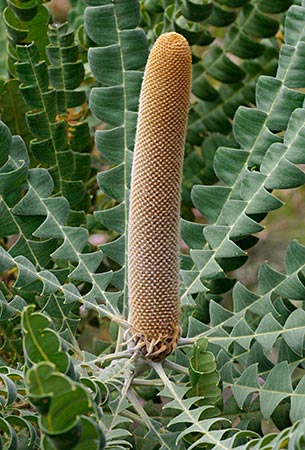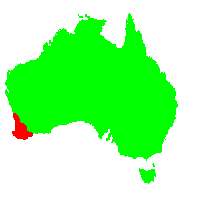General Description:
Banksia grandis is usually a medium-sized tree to about 10 metres high but sometimes much smaller in exposed coastal areas. The leaves are probably the most distinctive of any banksia being up to 45 cm long by about 10 cm wide, strongly divided into triangular lobes to the midrib. The cylindrical flower spikes are also very large and may be up to 40 cm long by 8-9 cm in diameter and pale yellow in colour. Flowering occurs from spring through to mid summer. The flowers are followed by very large fruiting cones.
This species develops a lignotuber and can regenerate by vegetative means from the lignotuber if the upper parts of the plant are destroyed by fire. It can also regenerate from seed.
Banksia grandis, despite its obvious horticultural features is not often seen in cultivation. It is generally slow growing and may take many years to flower from seed. However, the dramatic, large leaves are so attractive that it could be grown purely as a foliage plant. It is best suited to areas with a dry summer and can be difficult to maintain in humid areas. It requires sandy, well drained soils in full sun or partial shade. It is moderately frost hardy. It is reported to grow well in a large container
Propagation from seed is reliable without pre-treatment and cuttings may be successful but may be slow to strike with a success rate may be well below 100%.

Banksia grandis – bud
Photo: Brian Walters

Banksia grandis flower
Photo: Danni Church
 Australian Native Plants Society (Australia)
Australian Native Plants Society (Australia)